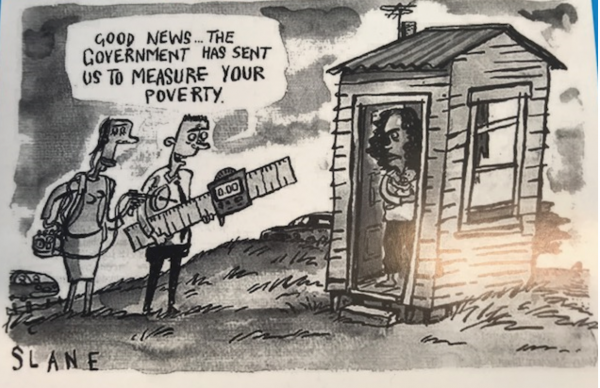
It’s probably been a bit of a surprise for many – especially for those who wiggled their eggs out of National’s basket and into Labour’s at voting time – to read claims from former Prime Minister Bill English that his government lifted 85,000 children out of hardship between 2011 and 2016.
Bill’s numbers defy the reality that more families are seeking help from charities than ever, and that the sector reports deeper and more intractable distress. Meanwhile the Ministry of Social Development’s figures show that relative income poverty for children – especially for those on the lowest incomes – has worsened.
According to the latest Household incomes survey, the number of children living beneath the 60% After Housing Costs (AHC) relative income poverty line is now 290,000. This number is 30,000 MORE than the number of children experiencing income poverty than in 2008. Most importantly, between 2008 and 2016, the number of children experiencing the worst poverty (using the 40% AHC measure) and who are most likely also suffering from material deprivation increased substantially – from 105,000 to 140,000.
Our former PM has claimed that the new Labour Government ‘lacks ambition’, while presenting sudden and confusing ‘facts’ about hardship reduction.
“The Prime Minister committed her Government to reducing the number of children in material hardship over the next ten years by 70,000. Yet, over the last five years of the National government, the number of children in material hardship fell by 85,000.
“So this Government is promising to do less over a longer period of time than National did – in spite of its bold claims it would do better.
What is going on here?
One critical detail that Bill hasn’t acknowledged is the global financial crisis of 2008-09. Unemployment reached a peak just before 2010 and remained consistent over the next few years. Fewer wage increases occurred. Many low-waged families lost their jobs, and many who retained work were unable to meet their basic needs as costs increased at a faster rate than wages. In 2011, there were 234,600 children supported by parents who received a welfare benefit, compared to just over 201,000 in 2008.
Figure 1. Household labour force survey – unemployment rate (trend series)
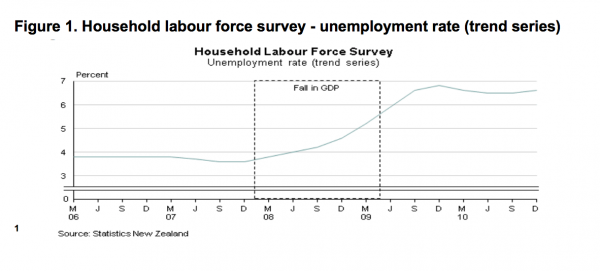
Naturally, the hardship numbers increase as the result of an economic recession, and decrease in the recovery phase following a peak. But Labour has a much harder task on their hands of reducing the hardship numbers during a ‘normal’ period of economic activity. Their targets are indeed ambitious; relative income poverty has become deeply entrenched and is not easily fixed.
Why have hardship measures shown an improvement in recent years while income poverty for children has worsened?
Material hardship is determined by a Material Wellbeing Index (MWI) score, that is based on how many items considered necessary for an adequate standard of living a child does not have on a regular basis. There are two hardship measures, the ‘more severe’ measure meaning a child lives in a family that goes without nine or more of those items (there are seventeen in total) and the ‘less severe’, seven of those items.
Material hardship (of the ‘less severe’ kind) increased between the time National was elected in 2008 and peaked in 2011 with a total of 220,000 children. This was an increase of 50,000 on 2008. Meanwhile the numbers in severe hardship also peaked at 100,000.
In recent years, charities like KidsCan, Variety New Zealand and Fonterra have stepped in to fill some immediate needs through sponsorship and distribution of food and other basic necessities, such as raincoats and shoes. Government initiatives such as the KickStart Breakfast programme, and Fruit in Schools programme, and free doctor’s visits for under-13s have helped to tick off some of the immediate need.
KidsCan are now supporting more than 30,000 children who experience food insecurity every week. Last year the charity expanded their programme to include provisions for basic hygiene, as well as beds, mattresses and pillows. The Auckland City Mission helped families out with 12,753 food parcels between Christmas 2016 and 2017. In December last year, they had reached capacity, and needed $1.3 million to meet the growing need.
At the same time, Government social assistance in the form of top-up supplements and non-recoverable emergency housing grants has soared.
Today, many families are without proper homes as increased housing costs and scarcity have reached crisis proportions. The numbers on the waiting list for social housing doubled since 2015. Meanwhile housing need is ‘met’ by housing families temporarily in motels.
Charity interventions and a series of state Band-Aids have done little to improve families’ financial ability to provide for their children. Bill will remind us about the $25 increase for beneficiaries with children that came in during his Government’s last term in 2016, but data showing how effective that was for reducing poverty isn’t even out yet. And when it does show up – two years out-of-date – it is likely to be a drop in the bucket. Likewise, it will be 2020 before the data shows the impacts of Labour’s Families Package on poverty measures.
While some families experience fewer lacks, their underlying income poverty remains. The real evidence of poverty is in the stressed and desperate families queueing at Work and Income, the increase in uptake of charity services, and the unrelenting need for housing.
Jeni Cartwright is a researcher with Child Poverty Action Group

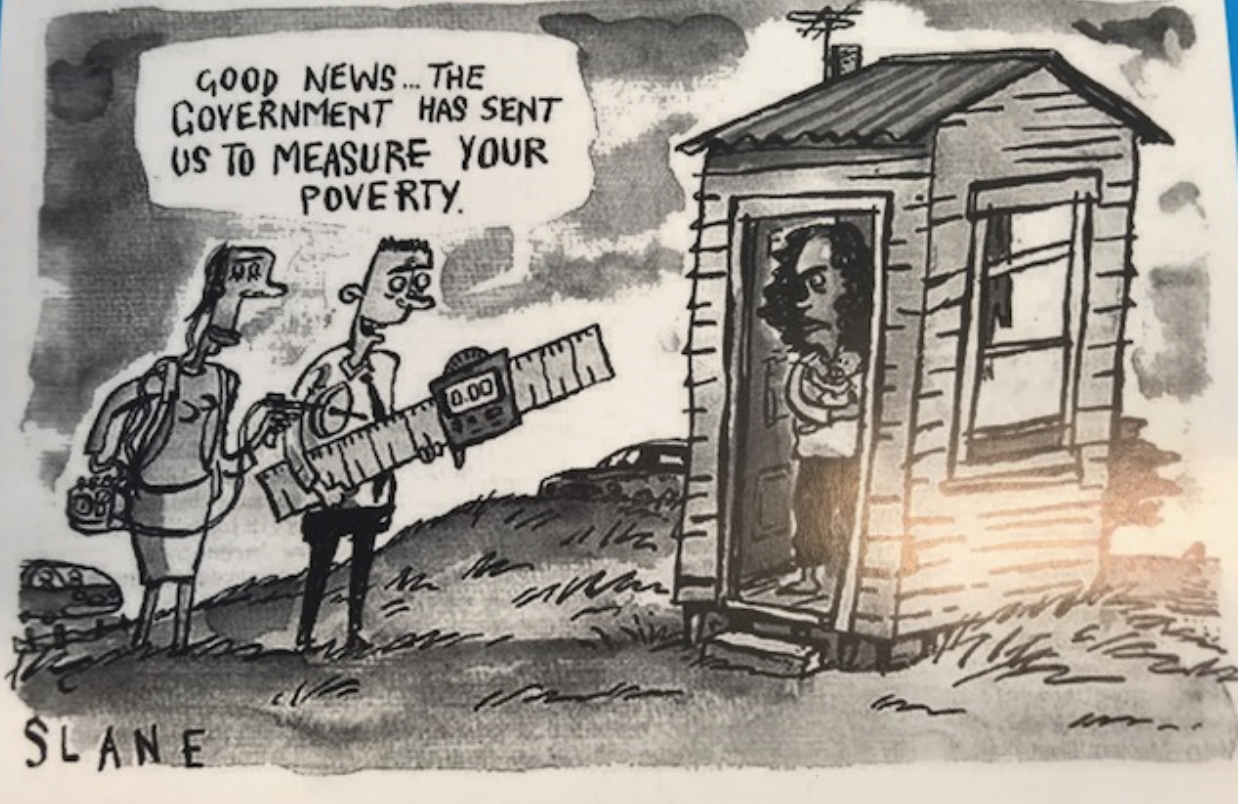
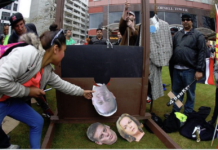

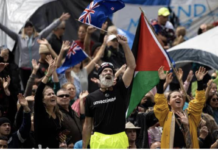

Are you saying that the good christian type in Bill English is lying, again?
The National government took the first step towards reducing child poverty (having been complicit in many policies to increase it) by increasing the benefit by $25 per week in 2016. This appears to have led to a modest reduction in the number living in poverty. In principle, it demonstrates that you can “throw money at a problem” and being to solve it, which is the opposite of what we have been told for years.This points to what works… (Dr Liz Jordan, TDB.) Yep, I agree. Money needs to be thrown at Poverty in all its different guises. While agencies like Kids Can and other charities are out there providing a band aid and trying to help the impoverished, whoevers in government, should stop providing corporate welfare and direct it toward the people who need it most, our nations poor.
The National government took the first step towards reducing child poverty (having been complicit in many policies to increase it) by increasing the benefit by $25 per week in 2016. This appears to have led to a modest reduction in the number living in poverty. In principle, it demonstrates that you can “throw money at a problem” and being to solve it, which is the opposite of what we have been told for years…This points to what works..
(Dr. Liz Gordan, TDB) Well, I agree. It’s time to throw meaningful amounts of money at Poverty in all it’s different guises. Don’t pay any attention to what Bill says, it’s irrelevant. The vultures are circling, knives are being sharpened. No one’s going to care what an ex leader has to say.. He’s a gone burger..
Just a thought, if the government are considering throwing money at a corporate yacht race or a horse racing place why not throw it at Kids Can, City Mission and all the other charities that provide real help to the impoverished…
This would back up frank’s story that English is developing something of a rep for being “loose with the truth”. Ie, a frigging liar!!
It shows the complexity of poverty measures, and how easy it is to exploit the numbers – and dangerously so because those statements made by Bill English and others are repeated in the media, allowing their supporters to applaud their self-proclaimed successes, regardless of the truth and the evidence. It causes confusion and it’s completely counter-productive to the real aim of reducing poverty among those most in need, and amounts to game playing with such a serious issue for political leverage.
It is just further evidence of how complex measuring poverty actually is and how easily the numbers can be exploited. Moreover, it is dangerous, irresponsible and counter-productive to the real goal of actually helping children out of poverty, to draw a false picture of improvement with the figures presented out of context. The information is then repeated and disseminated widely as fact, creating confusion and poor framing of the real issue. Political game playing with children’s wellbeing is reprehensible, in my opinion!
The National government took the first step towards reducing child poverty (having been complicit in many policies to increase it) by increasing the benefit by $25 per week in 2016. This appears to have led to a modest reduction in the number living in poverty. In principle, it demonstrates that you can “throw money at a problem” and being to solve it, which is the opposite of what we have been told for years. This points to what works.
(Dr Liz Gordon. TDB)
Well I have to agree. If we want to stop Poverty in all its forms we have to throw meaningful amounts of money at it. Don’t believe or listen to Bill and Co. The vultures are circling. The knives are out and being sharpened. Soon Bill will be the Ex leader of the Also Ran Party. He’s a gone burger.
Here’s a thought. If the current Government are thinking of throwing tax dollars at a corporate yacht race or even the horse racing industry (to late), why not throw it at Kids Can, City Mission and other worthwhile charitable organizations who are helping the impoverished right now, instead?
The National government took the first step towards reducing child poverty (having been complicit in many policies to increase it) by increasing the benefit by $25 per week in 2016. This appears to have led to a modest reduction in the number living in poverty. In principle, it demonstrates that you can “throw money at a problem” and being to solve it, which is the opposite of what we have been told for years. This points to what works..
(Dr Liz Gordon, TDB) Well I’m going to agree. If we want to stop Poverty in all its forms, we need to throw meaningful amounts of money at it. Don’t listen to what Bill is saying. It’s irrelevant. The vultures are circling. The knives are being sharpened. Soon Bill will be the Ex leader of the also ran party. He’s a gone burger! Here’s a thought. If the current government are thinking, of throwing money at a corporate yacht race or even horse racing, why not throw those dollars at Kids Can, City Mission and other worthy charitable organizations who are actually helping impoverished people right now, instead?
Jeni, please allow me to explain how the statistics work:
Since 2008 the median income has risen significantly and since ‘poverty’ is measured as those receiving less than a percentage of the median, it’s obvious the number of those defined as being in poverty (which is not real poverty, it’s actually ‘relative poverty’) will increase.
The problem of measuring poverty is so perplexing that the new government has kicked the can down the road by setting up a committee to investigate it. So I am confident that this new committee will have found a new poverty measure in, oh, 3 years? 😉
Gliding on.
As for the various charities, I wouldn’t worry so much. As Roger Douglas once said: “Every free resource will have an infinite demand on it”, or to put in terms of movie quotes: If you build it, they will come.
The increase in relative income poverty is certainly evident for those earning less than 40% of the national median (AHC)
AndrewO, “median income” is only half the story. You’re conveniently not mentioning OUTGOINGS. You haven’t considered rises in housing costs, food, electricity, prescriptions, education, transport, etc.
It’s bugger all to talk about INCOME when you don’t compare it to OUTGOINGS. So, to put it in pictures you can understand, it’d be like receiving an income of $1 million dollars a year. Does that make you a millionaire? Technically yes. But if your most BASIC accomodation, food, medicines, transport, etc, cost $1.1 million a year – you’re no better off.
That’s the bit you’re ignoring.
You’re right Priss!
Measuring poverty is really complicated. Maybe even an exercise in futility?
Maybe we should focus on overall economic improvement rather than worrying about individuals who, no matter how much hand wringing we do, will still shoot themselves in the foot.
“Individuals” being nearly 250,000 children? The people who will grow up to be the decision makers and run the world need to be fostered and cared for not walked all over and forgotten!
250,000 is a UNICEF figure, and it is nonsense.
They define child poverty is declared as being in a family with less than 60% of a country’s median income. By this measure progress is made not by making families better off but in better squashing families around the median.
The problem with any data coming from these earnest do-gooder organisations is that they’re just trying to justify their existence in order to expand their bureaucracy. They are not our friend!
Thank you for this Jeni.
This basic framing and explanation of these statistics and definitions is nearly always absent when commentators from both sides of the spectrum (and the massive gang of pragmatic sneaks in ‘the middle’) talk about poverty measurement.
[…] Jeni Cartwright says in her blog Confusion reigns on measurement of Child Poverty – THANKS BILL, National’s 85,000 claim is based on hardship data taken from 2011, the height of the impact of […]
Comments are closed.